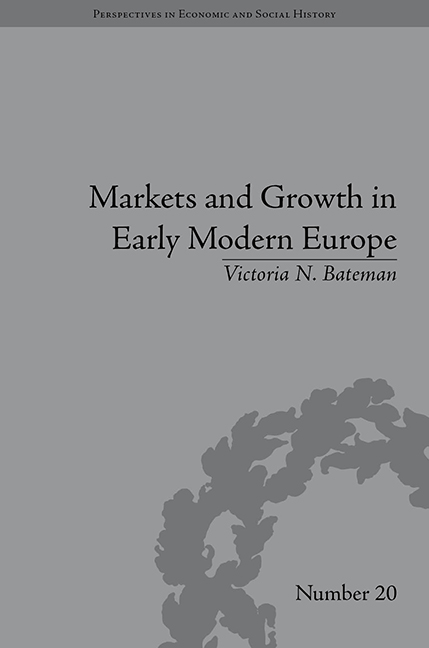Book contents
- Frontmatter
- CONTENTS
- List of Figures and Tables
- Acknowledgements
- Preface
- Introduction
- 1 Markets in History: A Survey
- 2 The Course of Early Modern Market Integration: Country-Level Results
- 3 The Course of Early Modern Market Integration: The Mediterranean and the North-West Region
- 4 Early Modern Market Integration in a Longer Run Perspective
- 5 The Causes of Early Modern Market Integration and Disintegration
- 6 The Consequences of Early Modern Markets: An Examination of the Relationship between Markets and Economic Growth
- 7 Conclusions and Implications for Economic Policy and the Modern Day
- Notes
- Works Cited
- Index
1 - Markets in History: A Survey
- Frontmatter
- CONTENTS
- List of Figures and Tables
- Acknowledgements
- Preface
- Introduction
- 1 Markets in History: A Survey
- 2 The Course of Early Modern Market Integration: Country-Level Results
- 3 The Course of Early Modern Market Integration: The Mediterranean and the North-West Region
- 4 Early Modern Market Integration in a Longer Run Perspective
- 5 The Causes of Early Modern Market Integration and Disintegration
- 6 The Consequences of Early Modern Markets: An Examination of the Relationship between Markets and Economic Growth
- 7 Conclusions and Implications for Economic Policy and the Modern Day
- Notes
- Works Cited
- Index
Summary
As we have seen, markets are central to the explanations that have been put forward for the sustained economic growth that began with the British Industrial Revolution and continues to the present day. Having great influence over the formation of this market-led view is a particular vision of life in Europe before the Industrial Revolution. The economy is seen as backward commercially and, as a consequence, technologically, leaving little room for growth. Whilst in the modern world people come into contact with the market every day of their lives – through the goods they buy, the daily work they undertake for businesses and the banks that look after their money – people of the past are often seen as having had minimal contact with goods, labour and financial markets. We might not quite all have been living as hermits in wooden huts, subsisting on our own patch of land, but something not far from this is probably a fair depiction of what many people have in mind. This all supposedly changed in the seventeenth and eighteenth centuries, preparing the way for the Industrial Revolution. It is on this understanding of the past that the poor economies of today are told that liberalizing markets will result in them catching up with the rich west. By taking a chronological journey through history from Roman times towards the present day, this chapter questions the historical understanding on which this advice is given.
- Type
- Chapter
- Information
- Markets and Growth in Early Modern Europe , pp. 11 - 40Publisher: Pickering & ChattoFirst published in: 2014

